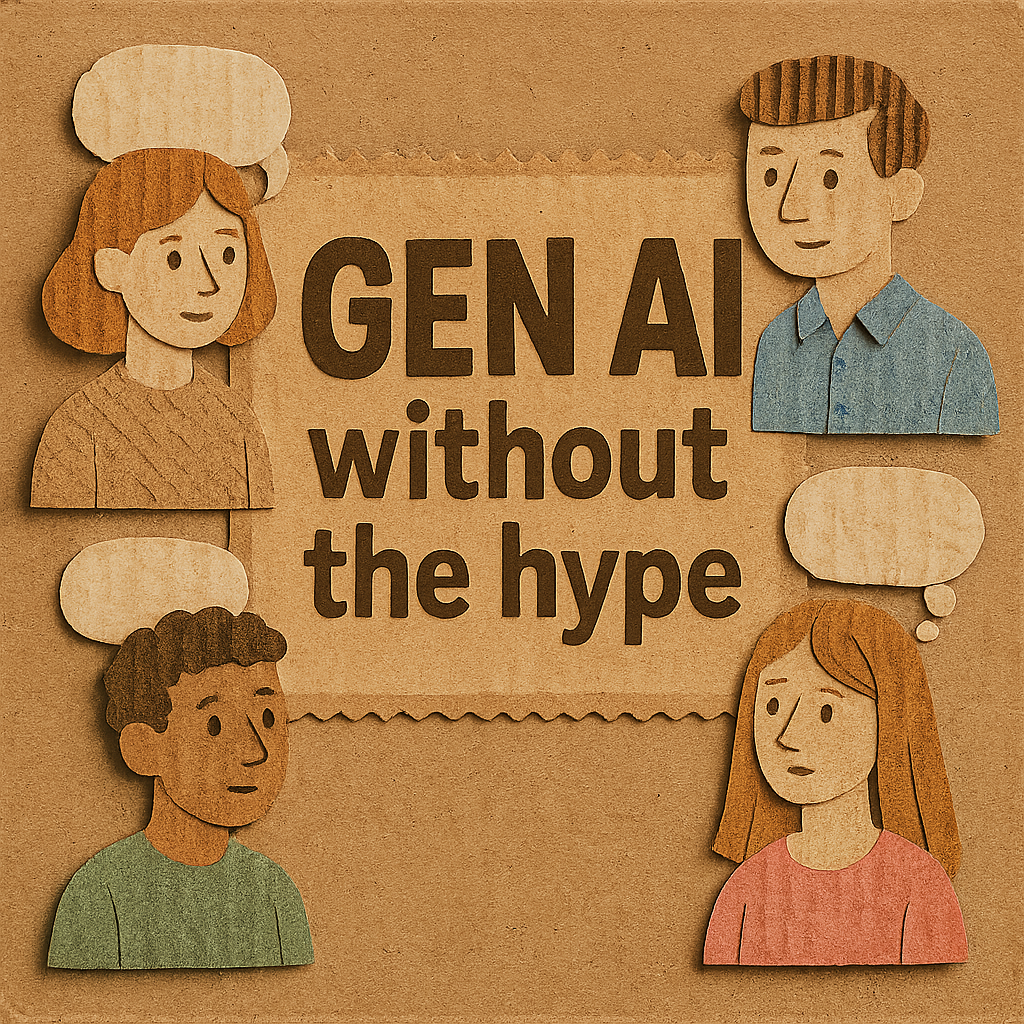Exploring Generative AI: Beyond the Hype
Generative AI has exploded in popularity, with tools like ChatGPT, DALL-E, and Midjourney capturing public imagination. But beyond the initial excitement, how can we approach generative AI in a thoughtful, productive way? This article explores practical applications and responsible implementation strategies.
Common Challenges When Exploring GenAI
When I first started exploring Generative AI, I faced several challenges that might resonate with you:
- Very fast progress: The field is evolving at a breakneck pace, making it difficult to stay current
- FOMO (Fear Of Missing Out): The constant stream of new models and capabilities creates anxiety about falling behind
- No single source to learn: Information is scattered across academic papers, blog posts, GitHub repositories, and social media
These challenges can make the learning curve feel steep, but understanding the fundamentals can help you navigate the rapidly changing landscape.
Understanding What Generative AI Actually Is
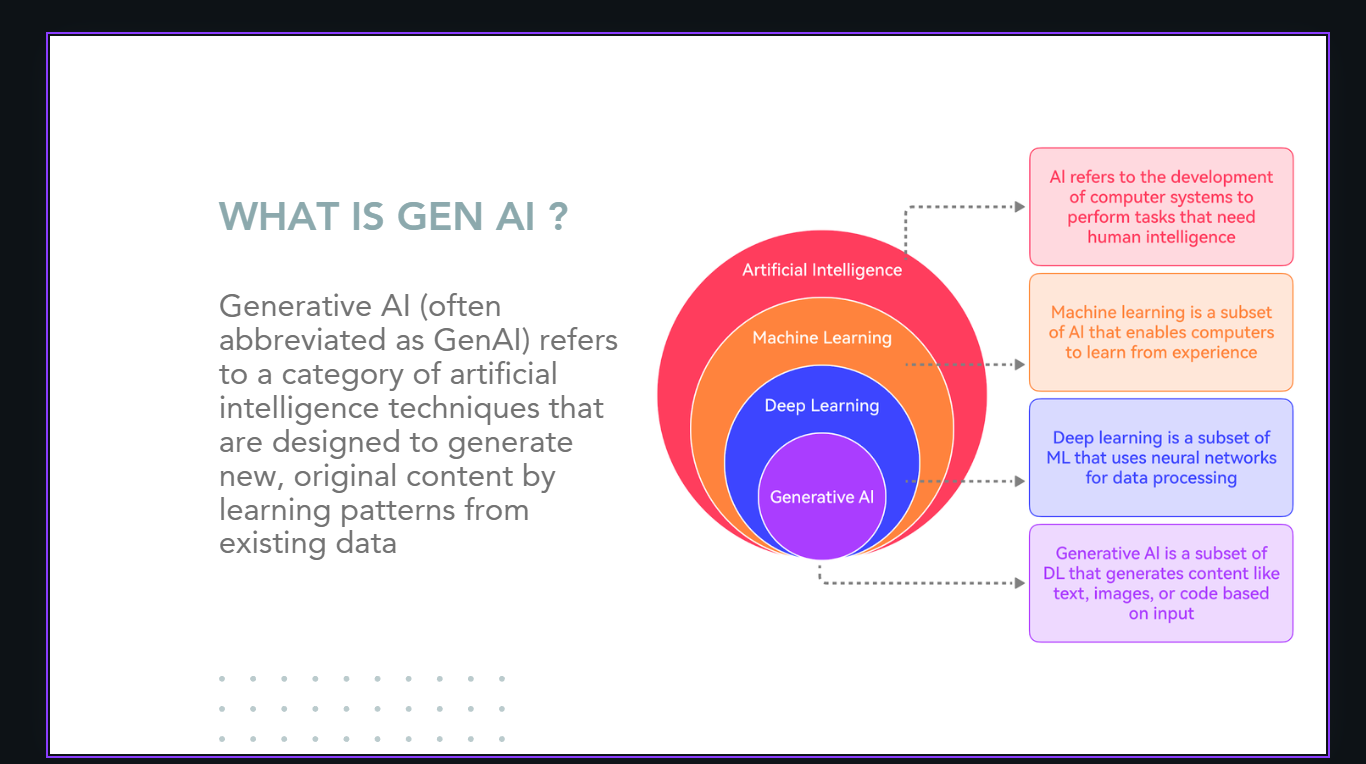
Generative AI (often abbreviated as GenAI) refers to a category of artificial intelligence techniques designed to generate new, original content by learning patterns from existing data. This includes:
- Text generation (articles, stories, code)
- Image creation and editing
- Audio synthesis (music, voice)
- Video generation
- 3D model creation
At its core, GenAI is a subset of deep learning, which itself is a subset of machine learning and artificial intelligence. The most powerful current systems are built on foundation models—large models trained on vast datasets that can be adapted to various tasks.
Foundation Models: The Building Blocks
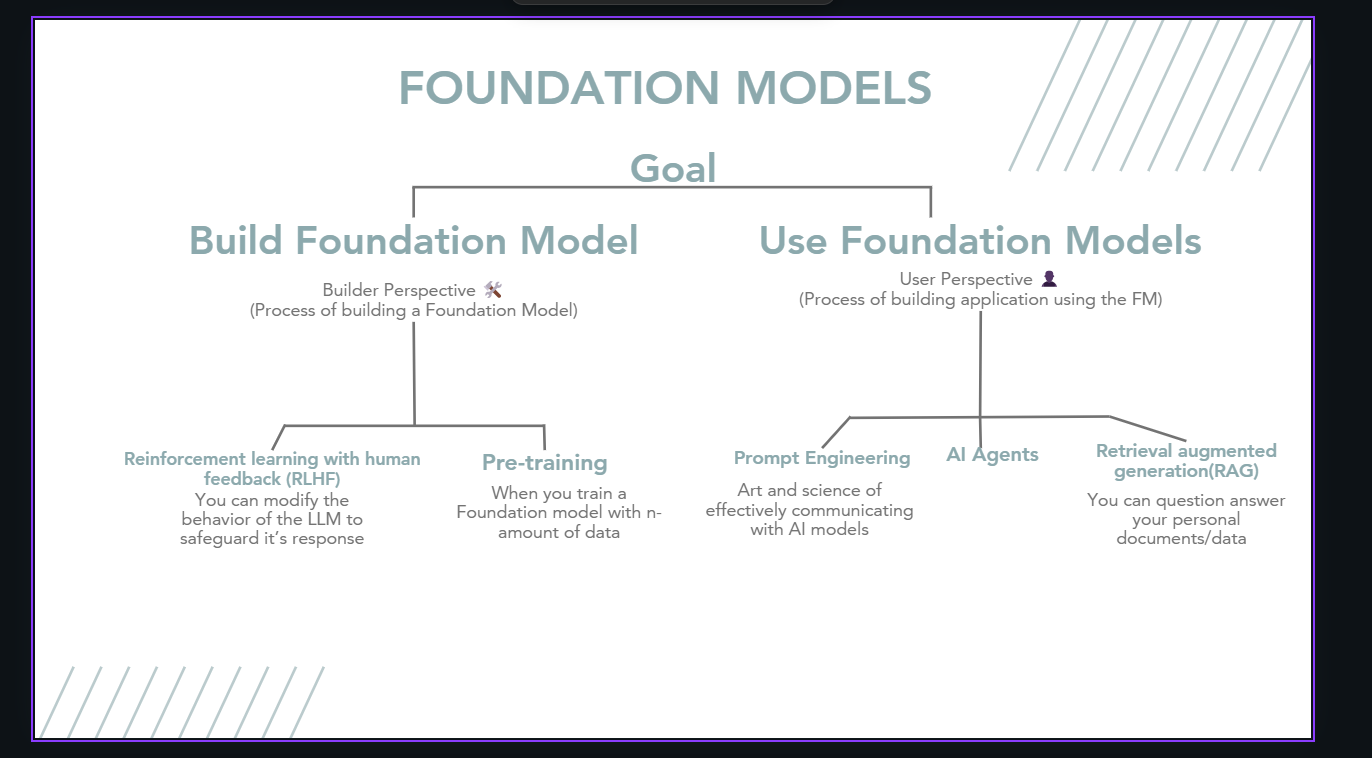
Foundation models represent a paradigm shift in AI, serving as versatile base models that can be adapted for numerous downstream tasks through fine-tuning or prompting. Users interact with these models through interfaces that abstract away the underlying complexity, allowing focus on practical applications and outcomes.
There are two main perspectives when working with foundation models:
Builder Perspective
This is the domain of data scientists and ML engineers who:
- Use reinforcement learning with human feedback (RLHF) to modify model behavior
- Perform pre-training with massive datasets
- Fine-tune models for specific applications

User Perspective
This is where software developers and end-users operate:
- Employ prompt engineering to effectively communicate with AI models
- Build AI agents that can perform complex tasks
- Implement retrieval-augmented generation (RAG) to ground AI responses in specific data
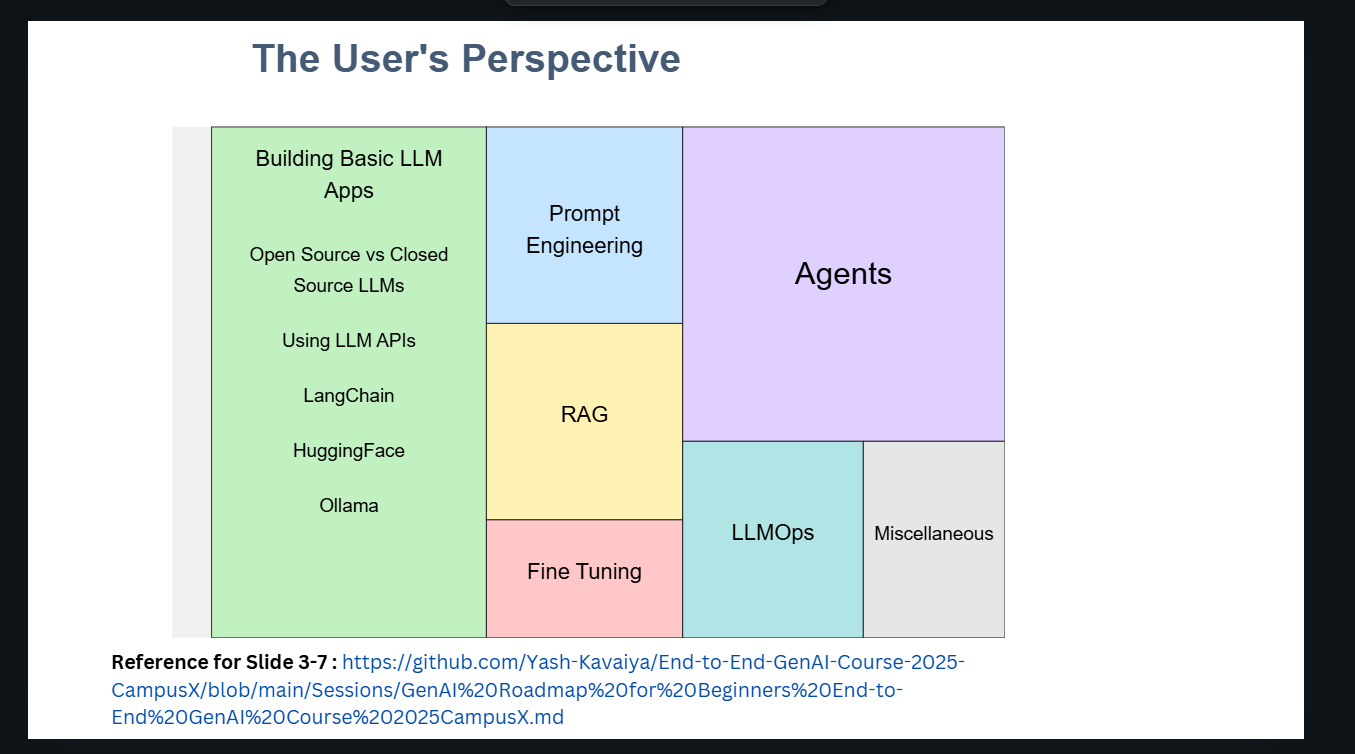
When approaching GenAI from a user's perspective, several key areas of focus emerge:
Building Basic LLM Apps
Understanding the differences between open source and closed source LLMs, learning to use LLM APIs effectively, and exploring frameworks like LangChain, HuggingFace, and Ollama for implementation.
Prompt Engineering
The art and science of effectively communicating with AI models to get desired outputs. This involves crafting clear, specific instructions that guide the model toward producing the results you need.
RAG (Retrieval-Augmented Generation)
RAG systems enhance LLM outputs by retrieving relevant information from external knowledge sources before generating responses. This grounds the AI's responses in factual information and helps reduce hallucinations.
Agents
AI agents are autonomous systems that can perform tasks, make decisions, and interact with their environment. They represent one of the most exciting frontiers in applied GenAI.
Fine Tuning
Adapting pre-trained models for specific use cases by training them on domain-specific data to improve performance on targeted tasks.
LLMOps
The operational aspects of deploying and maintaining LLM-based systems, including monitoring, scaling, and ensuring reliability in production environments.
Effective GenAI Workflows
A workflow in the context of GenAI refers to a structured approach for using language models to accomplish specific tasks. Workflows provide a framework for breaking down complex problems into manageable steps that can be handled effectively by AI models.
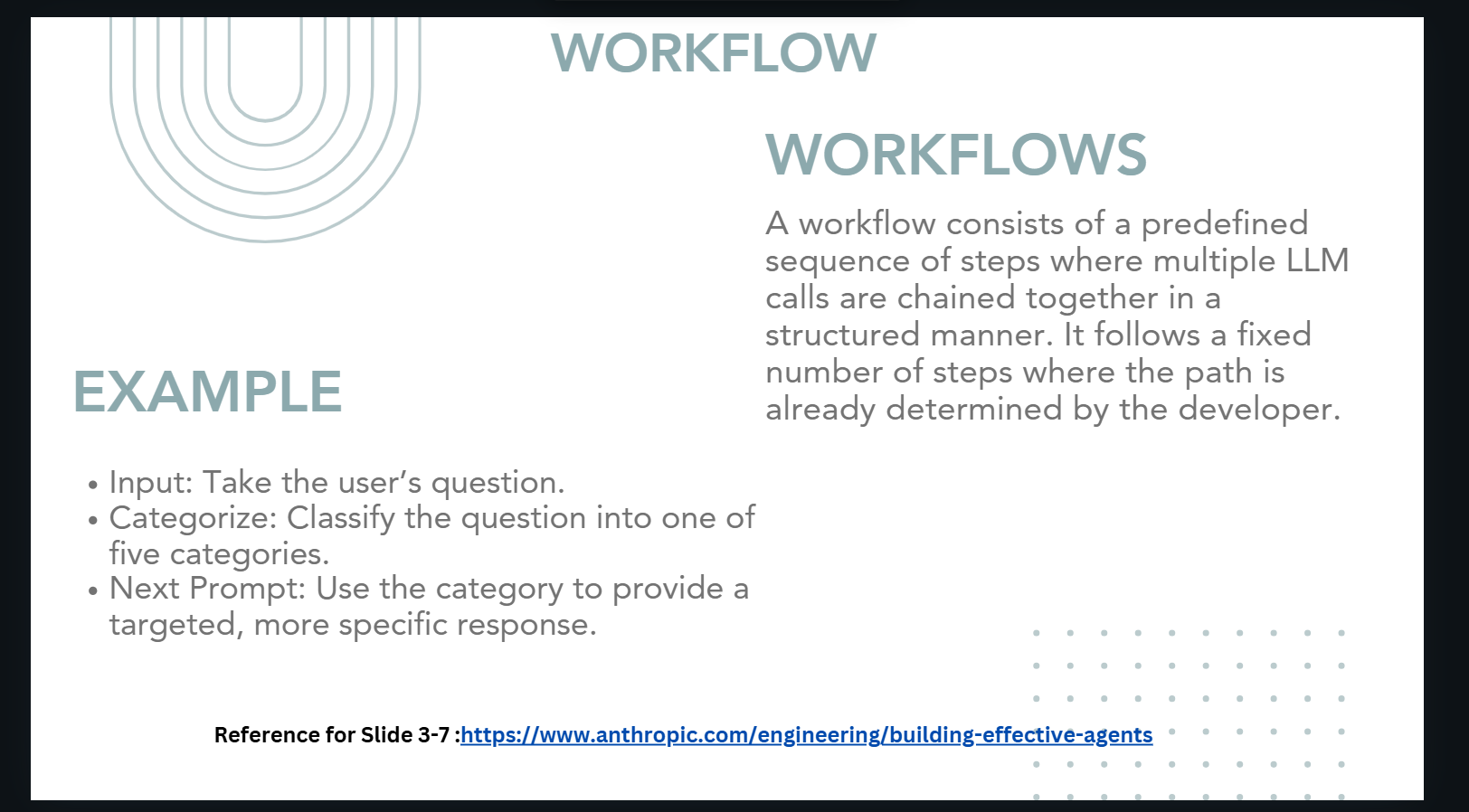
Types of GenAI Workflows
Parallelization
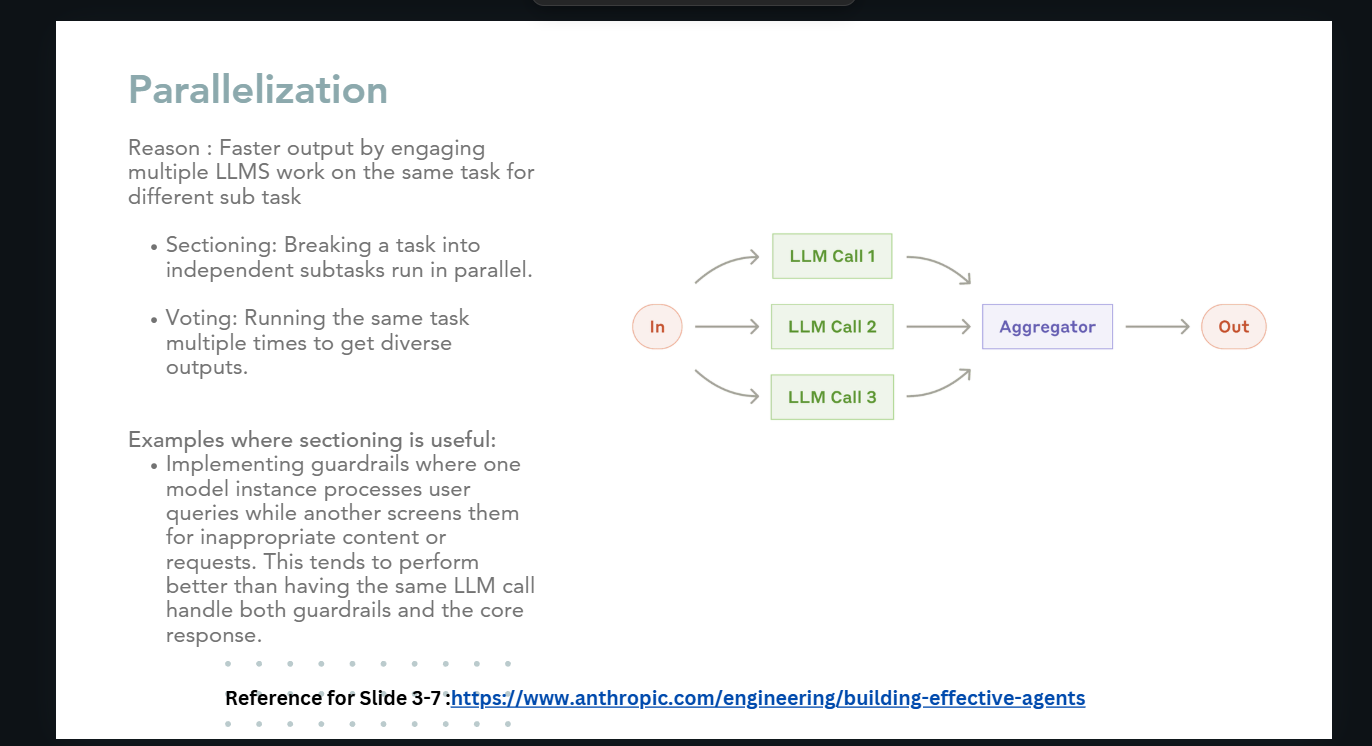
Parallelization involves engaging multiple LLMs to work on the same task for different subtasks:
- Sectioning: Breaking a task into independent subtasks that run in parallel
- Voting: Running the same task multiple times to get diverse outputs
This approach is particularly useful for implementing guardrails where one model instance processes user queries while another screens them for inappropriate content.
Prompt Chaining
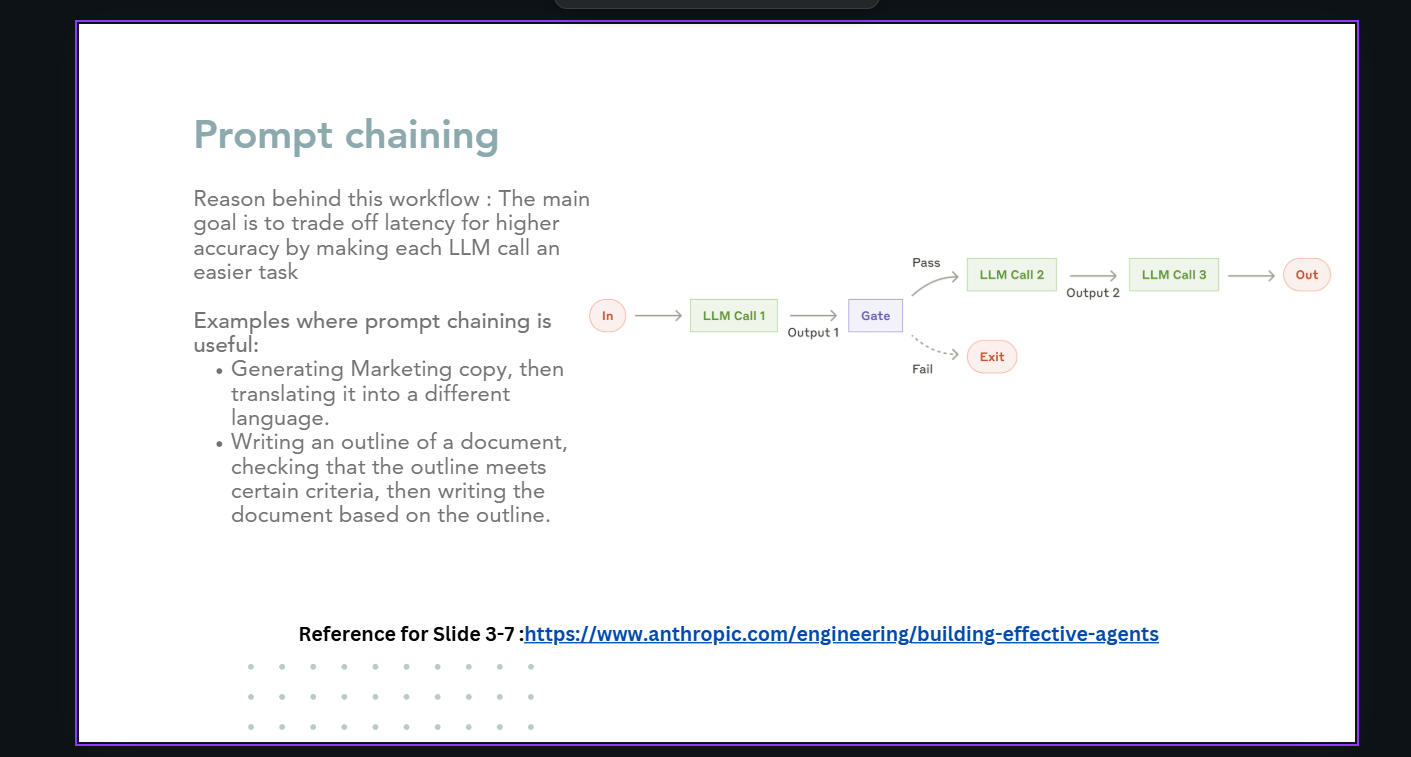
Prompt chaining trades off latency for higher accuracy by making each LLM call an easier task:
- Generate marketing copy, then translate it into a different language
- Write an outline of a document, check that it meets certain criteria, then write the document based on the outline
This approach breaks complex tasks into manageable steps, improving overall quality.
Example workflow:
- Input: Take the user's question
- Categorize: Classify the question into one of five categories
- Next Prompt: Use the category to provide a targeted, more specific response
AI Agents: Beyond Simple Workflows
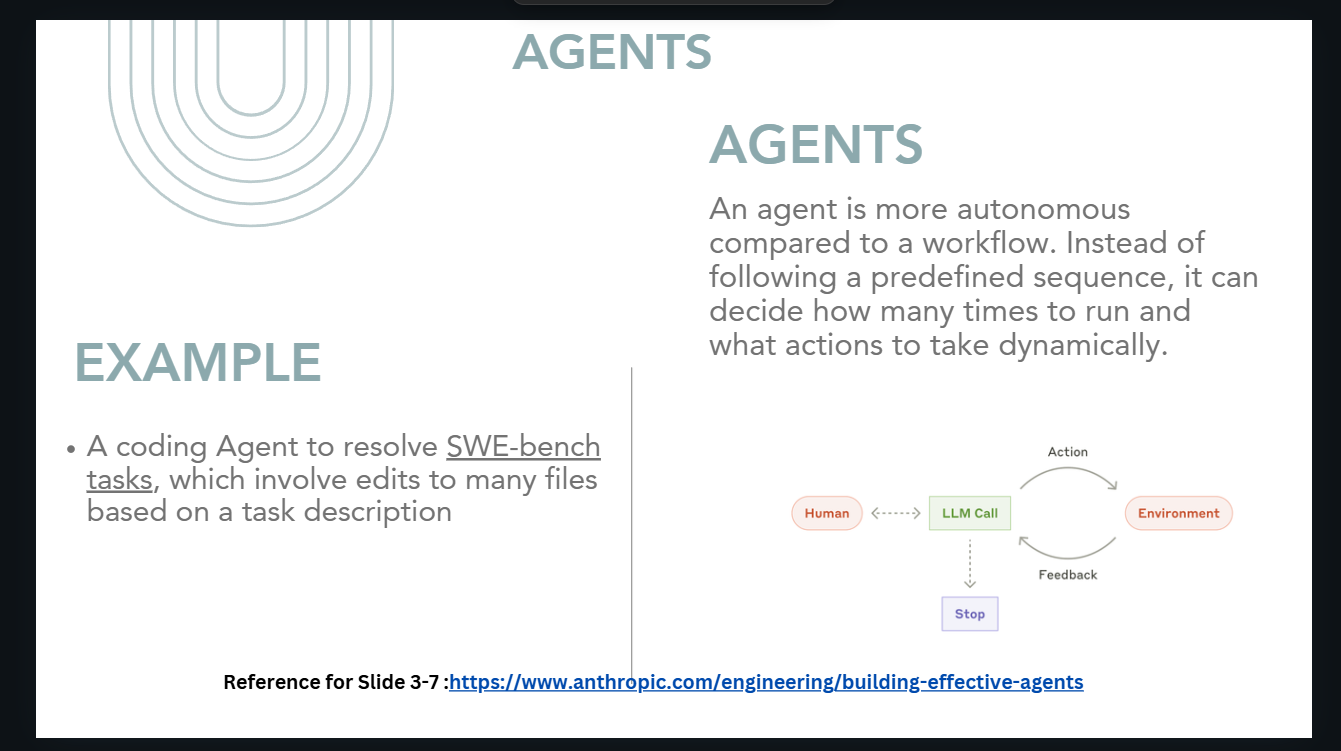
An agent is more autonomous compared to a workflow. Instead of following a predefined sequence, it can decide how many times to run and what actions to take dynamically. This autonomy makes agents particularly powerful for complex tasks where the path to the solution isn't straightforward.
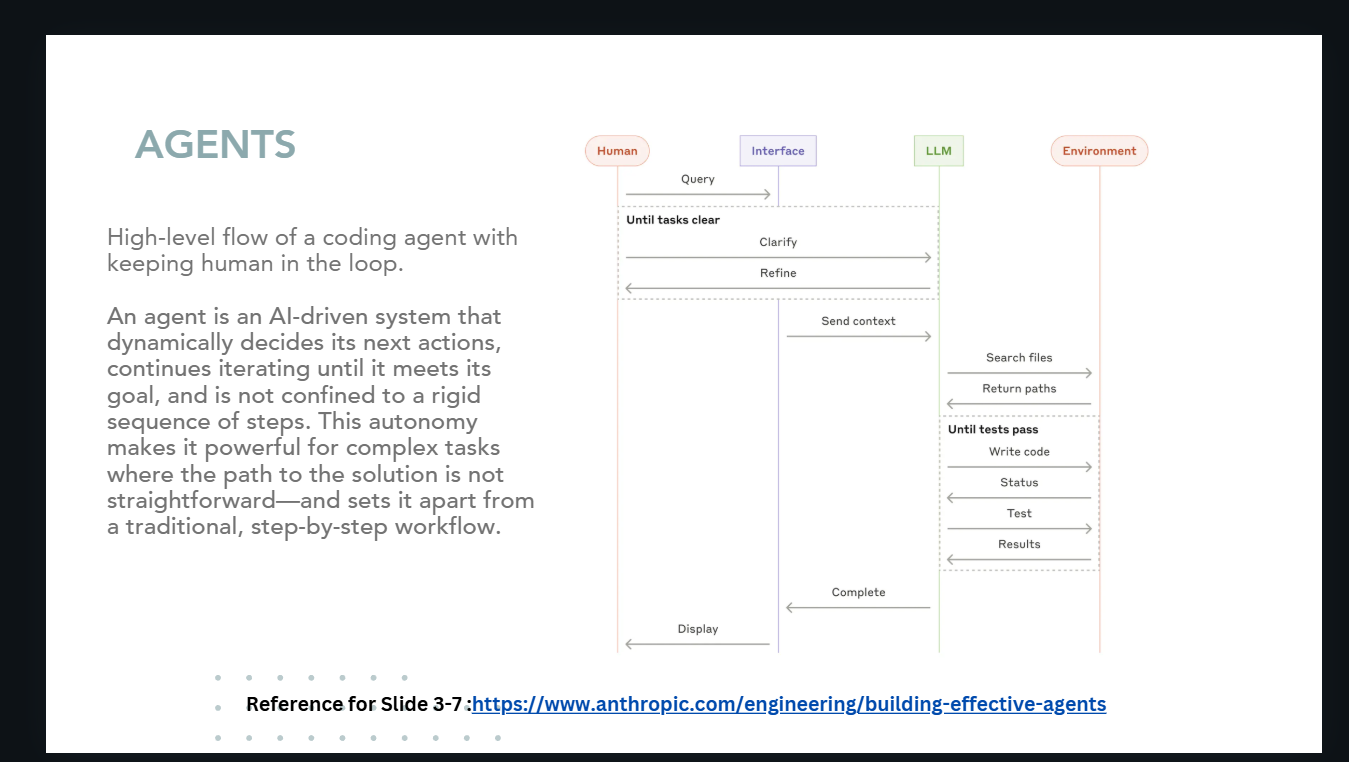
An agent is an AI-driven system that dynamically decides its next actions, continues iterating until it meets its goal, and is not confined to a rigid sequence of steps. This autonomy makes it powerful for complex tasks where the path to the solution is not straightforward—and sets it apart from a traditional, step-by-step workflow.
Example: Coding Agent
A coding agent can resolve software engineering benchmark tasks, which involve edits to many files based on a task description. The agent interacts with both the human user and the environment, taking actions based on feedback and continuing until the task is complete.
High-level flow of a coding agent with human in the loop:
- Human provides a query
- Agent clarifies and refines the requirements
- Agent sends context to the LLM
- LLM searches files, returns paths
- Agent writes code until tests pass
- Agent tests, reviews results, and completes the task
- Results are displayed to the human
CrewAI: Multi-Agent Collaboration Made Easy
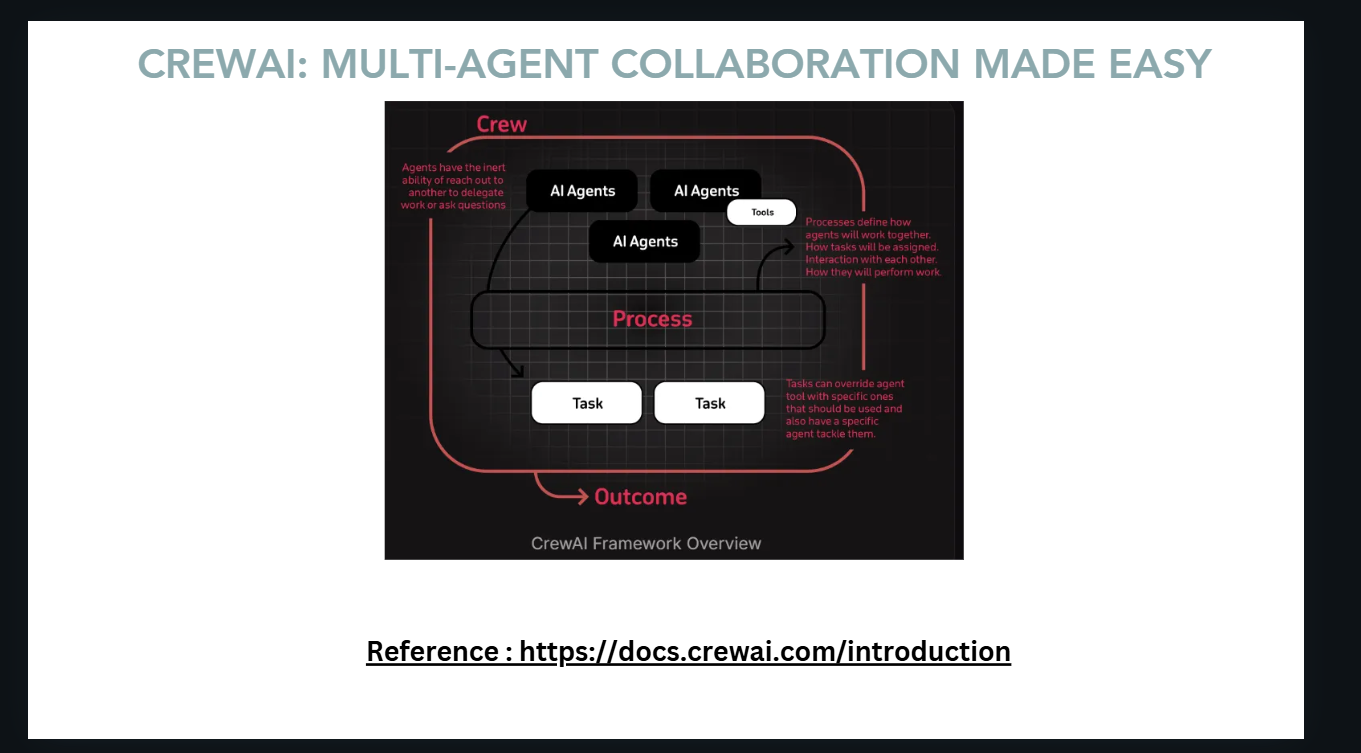
CrewAI provides a framework for orchestrating multiple AI agents to work together on complex tasks. The framework consists of:
- Agents: Individual AI entities with specific roles, abilities, and tools
- Processes: Define how agents work together, how tasks are assigned, and how agents interact
- Tasks: Specific actions that need to be completed, which can override agent tools with specific ones
- Tools: Capabilities that agents can use to perform their work
This collaborative approach allows for more sophisticated AI systems that can tackle complex problems through division of labor and specialized expertise.
Final Thoughts
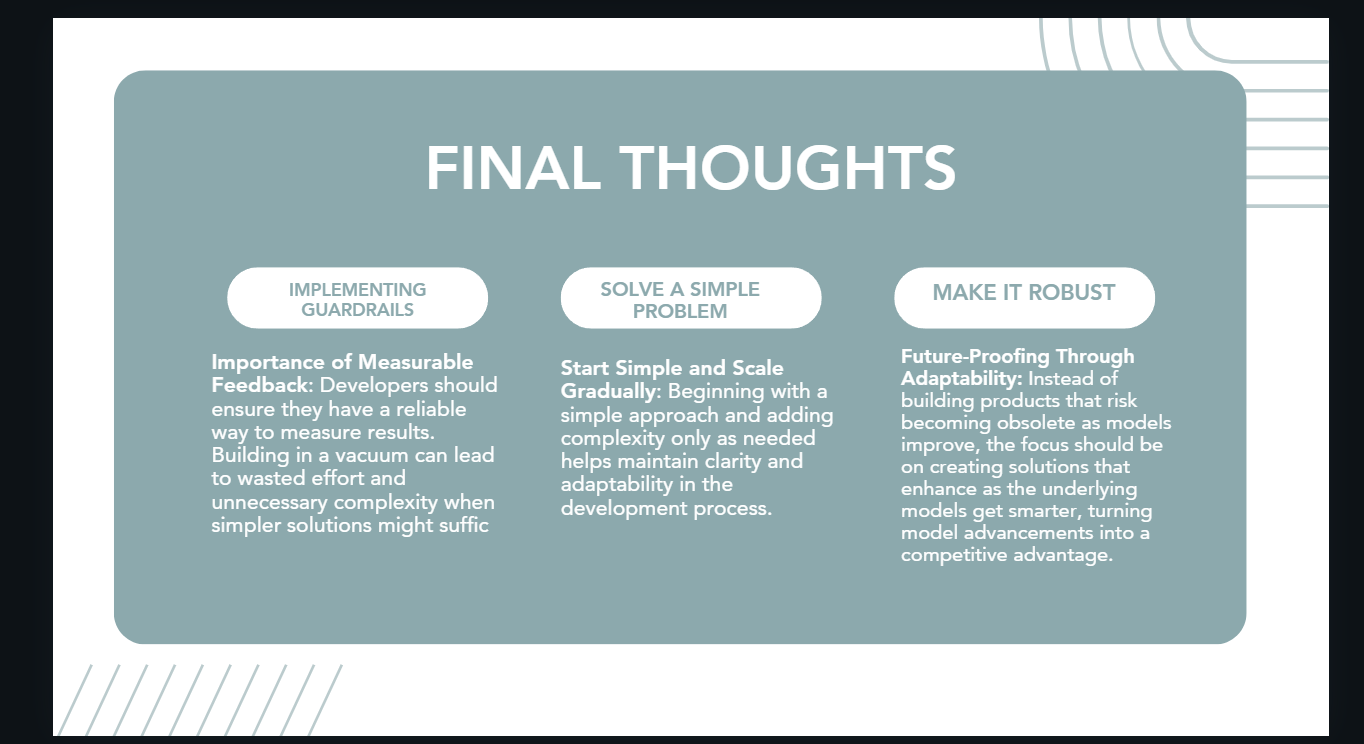
As you embark on your GenAI journey, keep these principles in mind:
Implementing Guardrails
Importance of Measurable Feedback: Developers should ensure they have a reliable way to measure results. Building in a vacuum can lead to wasted effort and unnecessary complexity when simpler solutions might suffice.
Solve a Simple Problem
Start Simple and Scale Gradually: Beginning with a simple approach and adding complexity only as needed helps maintain clarity and adaptability in the development process.
Make It Robust
Future-Proofing Through Adaptability: Instead of building products that risk becoming obsolete as models improve, focus on creating solutions that enhance as the underlying models get smarter, turning model advancements into a competitive advantage.
Conclusion
Generative AI represents a significant shift in how we create and work with content. By understanding both the builder and user perspectives, implementing effective workflows, and following sound principles, you can harness the power of GenAI while avoiding common pitfalls.
The field will continue to evolve rapidly, but the fundamentals outlined in this article will provide a solid foundation for your exploration and implementation of generative AI technologies.
References and Resources
- Anthropic: Building Effective Agents
- CrewAI Documentation
- GitHub: End-to-End GenAI Course 2025 by CampusX
- GenAI Roadmap Presentation
Massive Shoutout to CampusX
This comprehensive GenAI roadmap is inspired by the excellent content from CampusX. If you're interested in learning more about Generative AI, I highly recommend subscribing to their YouTube channel for more in-depth tutorials and explanations.

